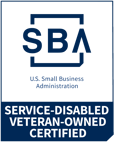This blog is based on Episode 2 of our GovEd Talks Video series: Building a Strong Foundation: Strategies for Navigating Change by Nicole Puri, Chief risk officer, bureau of the fiscal service, Marianne Roth Chief risk officer, consumer financial protection bureau and Meredith Stein Acting Director, Office of management assessment, national institutes of health. (panel: Planting Deep Roots to Withstand the winds of change)
In the realm of leadership, the power of a people-centric approach cannot be overstated. While our previous discussions at the Consumer Financial Protection Bureau (CFPB) provided insights into one organization's approach, today, we aim to explore the broader significance of adopting a people-centric leadership style in any setting.
Alignment with Purpose
At the heart of a people-centric approach lies the alignment of individual roles with the overarching mission and vision of the organization. When employees have a profound understanding of how their daily tasks contribute to the core mission, it creates a sense of purpose and motivation. This alignment is not limited to specific industries; it's a universal principle that can be applied in any organization.
But let's delve deeper into how this alignment manifests. When employees grasp the connection between their work and the higher purpose, it not only drives their engagement but also fuels a sense of ownership. The feeling that their contributions matter makes employees more enthusiastic, innovative, and proactive. This, in turn, creates a more vibrant and effective work environment, whether it's in the public sector, private sector, or non-profit organizations.
Cultivating a Culture of Learning
Adaptation to evolving requirements and challenges is inevitable. Therefore, creating a conducive learning environment is essential. Encouraging questioning, the challenging of assumptions, and continuous improvement are universal elements of a learning culture. This approach promotes growth and innovation, regardless of the field or industry.
In essence, learning is not confined to a classroom or training session; it's an ongoing process woven into the fabric of daily work life. And this is where a people-centric approach truly shines. When leaders prioritize learning and encourage employees to explore new horizons, it leads to an empowered workforce that's ready to tackle unforeseen challenges. Such a culture can thrive in any organizational landscape.
Open Communication and Inclusivity
Valuing the input and insights of team members is a fundamental aspect of a people-centric approach. Leaders who keep communication channels open and actively seek input foster an environment of collaboration and inclusivity. This is a practice that transcends organizational boundaries and can be embraced in any context.
When employees feel their voices are heard and their ideas are valued, they become more engaged and committed to their roles. This level of engagement and the collaborative spirit it fosters can elevate an organization's performance to new heights, be it a government agency, a tech startup, or a healthcare institution.
Diversity as a Catalyst for Excellence
Incorporating diversity into the fabric of an organization is not limited to a single sector. Research consistently demonstrates that diverse and inclusive teams drive innovation and effectiveness. Embracing diversity is a pivotal component of success in any field.
Taking a cue from the National Institutes of Health (NIH), where diversity is viewed as an essential element in scientific problem-solving, we see that this principle extends beyond specific organizations.
In summary, a people-centric approach to leadership is universally applicable and relevant. It emphasizes the significance of connecting individuals to a common mission, fostering a culture of learning, promoting open communication, and embracing diversity. By doing so, any organization, regardless of its industry or purpose, is better positioned to achieve excellence, drive positive change, and nurture a thriving community of individuals united by a shared vision.













